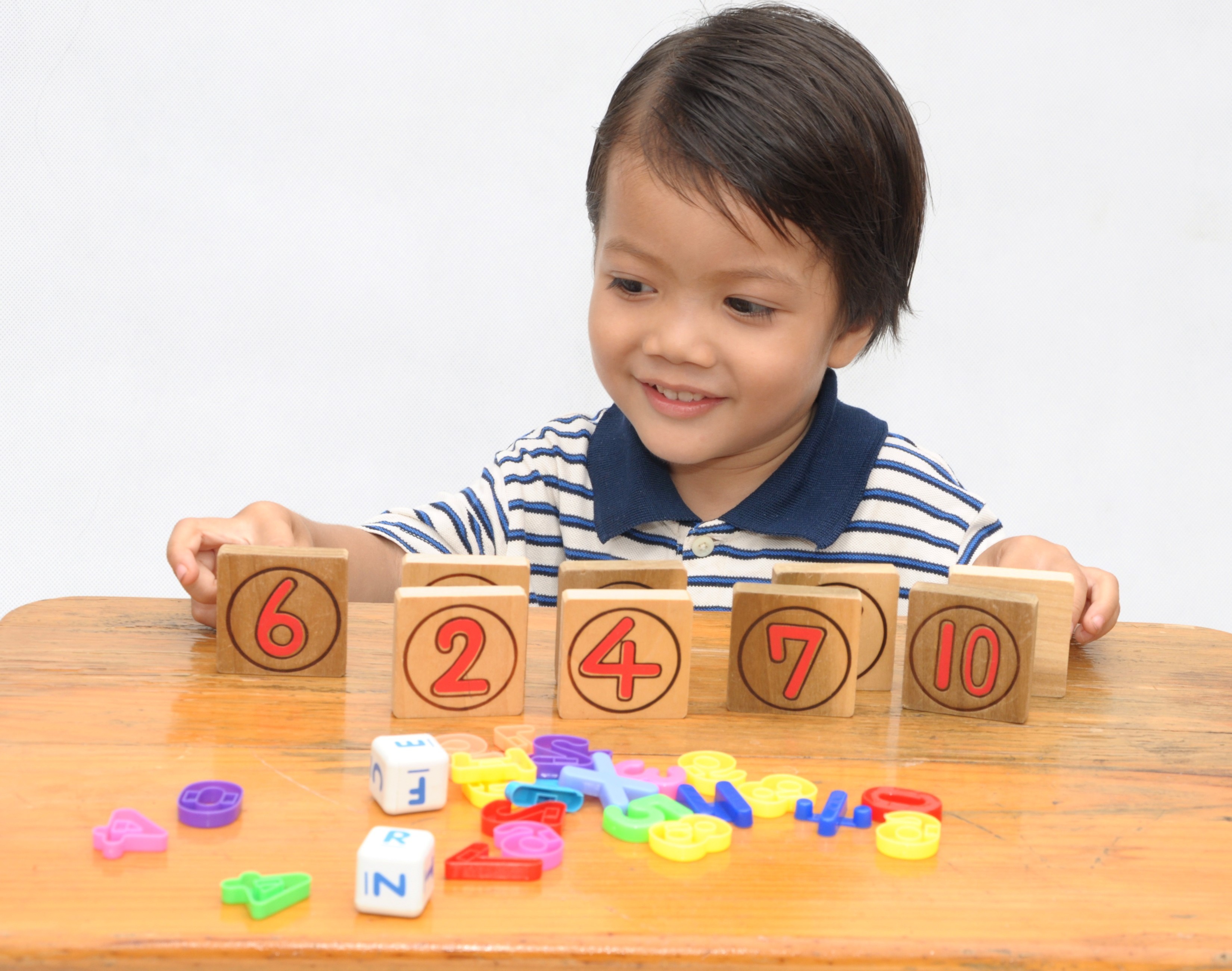Color Identification Normal Addition & Subtraction Worksheets for Ages 4-7
4 filtered results
-
From - To
Enhance your child's learning experience with our Color Identification Normal Addition and Subtraction Worksheets, designed for children aged 4-7. These engaging worksheets combine essential math skills with vibrant color recognition, making learning both fun and effective. Kids will practice basic addition and subtraction while identifying colors, fostering critical thinking and improving their number sense. Ideal for preschool and early elementary learners, our worksheets promote early math comprehension in a playful, visually stimulating manner. Perfect for at-home learning or classroom use, these resources are tailored to keep young minds engaged and eager to learn more. Download and watch their confidence grow!
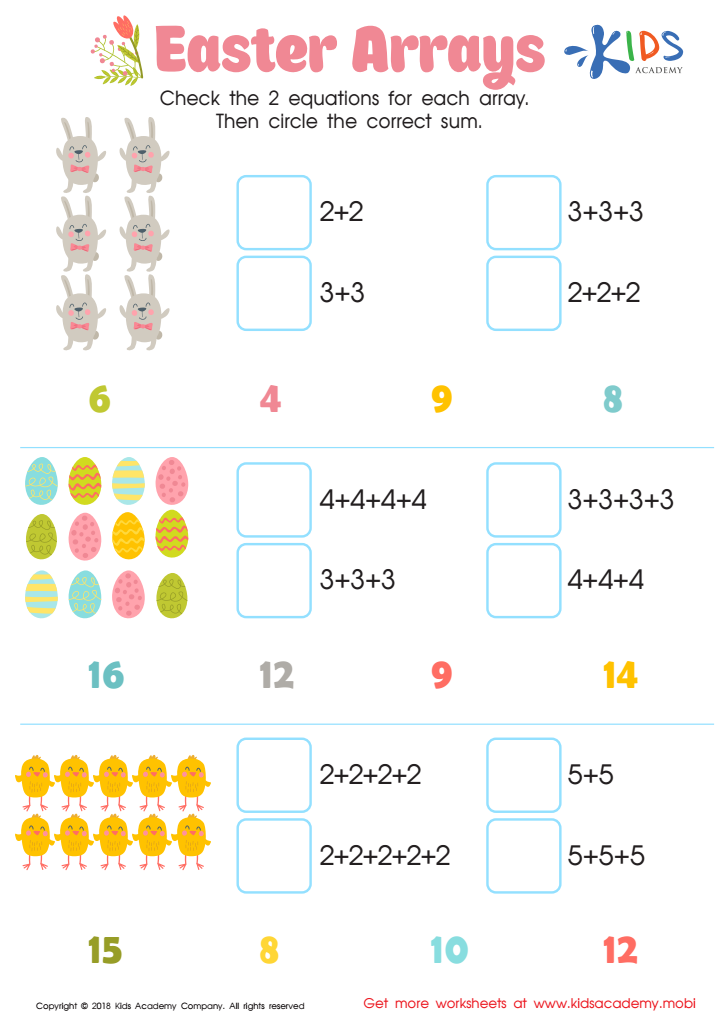

Easter Arrays Worksheet
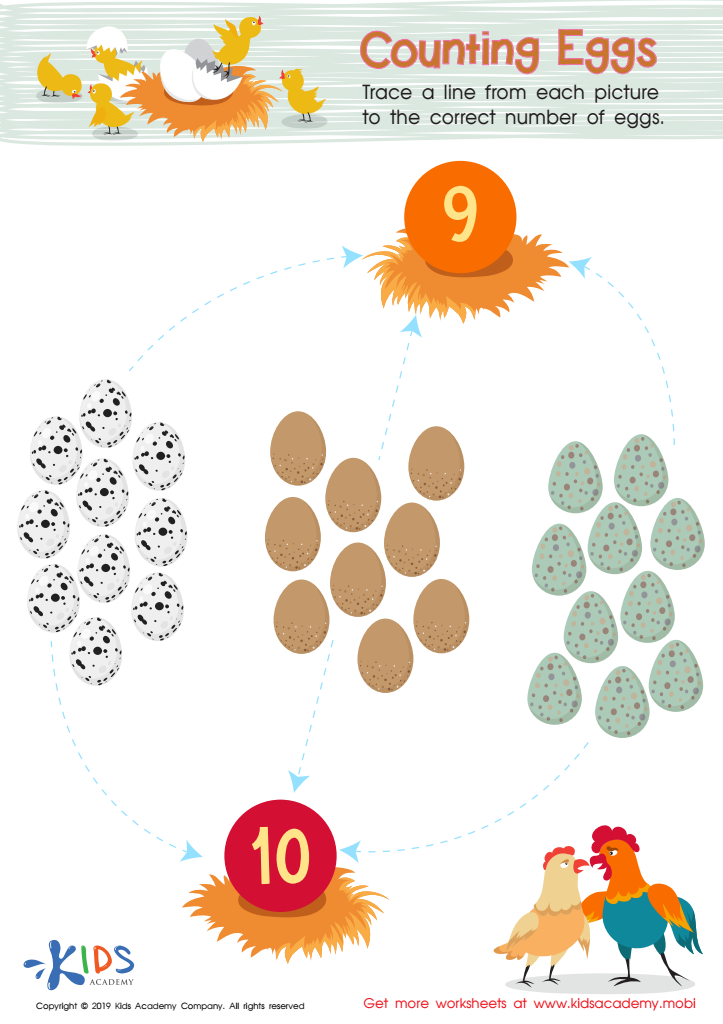

Counting Eggs Worksheet
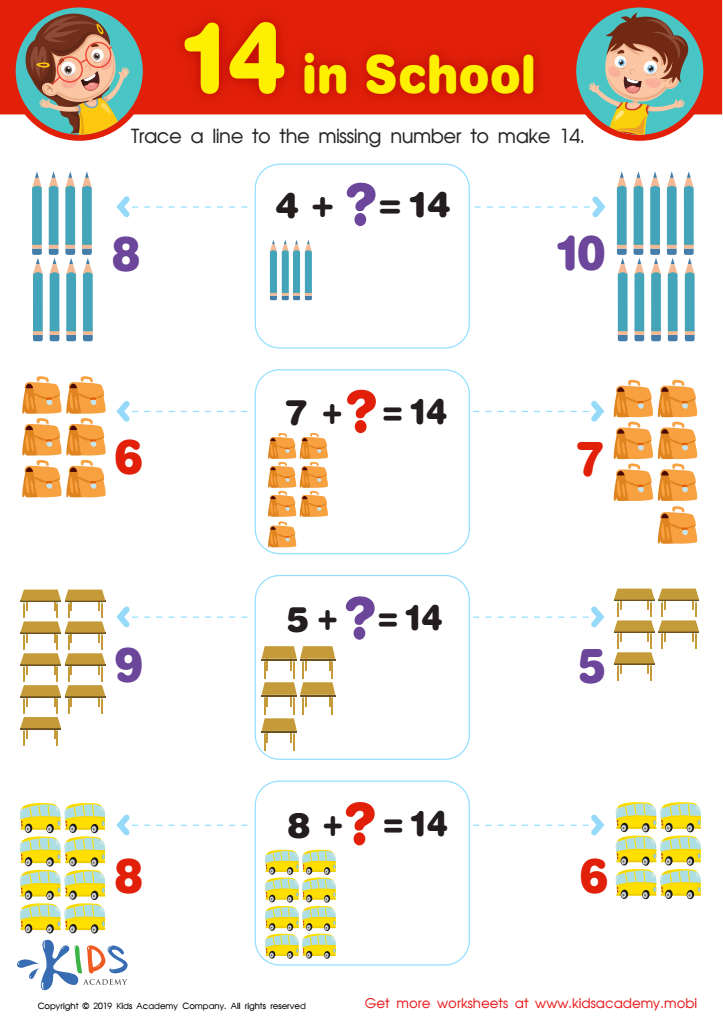

14 in School Worksheet
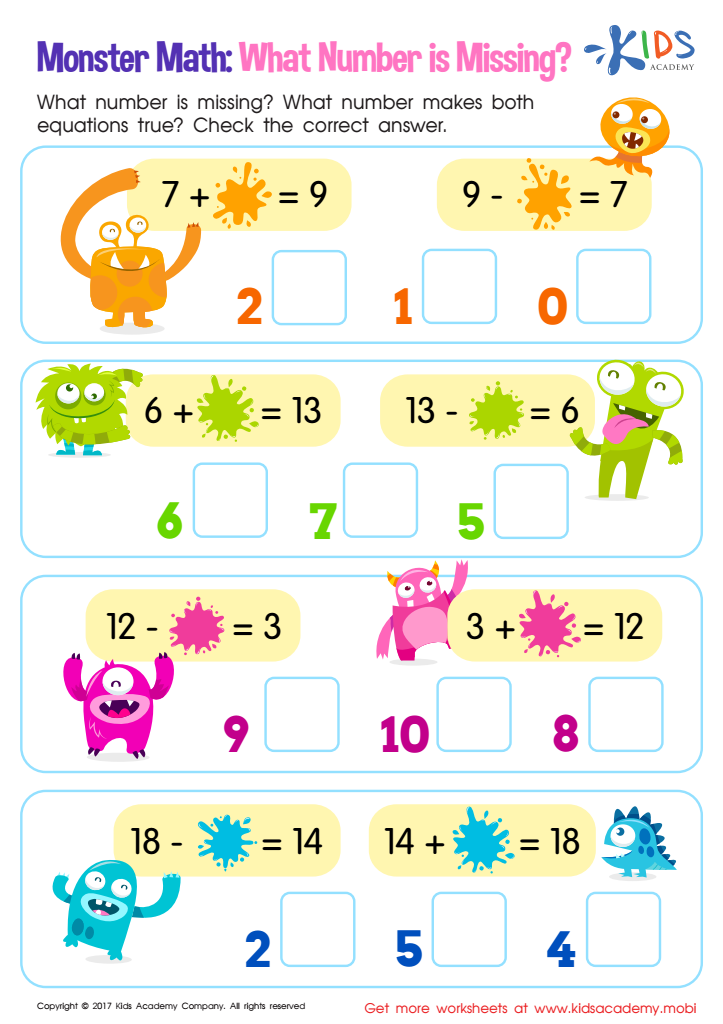

Missing Number: Monster Math Worksheet
Color identification and basic addition and subtraction are crucial foundational skills for children aged 4-7. At this developmental stage, children are particularly receptive to learning, making it an ideal time to introduce these concepts.
First, color identification helps enhance visual discrimination and categorization skills. Recognizing colors is not just about aesthetics; it fosters observational skills and boosts language development as children learn to describe and name colors in their environment. Furthermore, associating colors with different objects can improve memory retention and cognitive connections.
Second, normal addition and subtraction introduce basic mathematical concepts. Learning these operations through engaging methods—like counting colored blocks or using colorful manipulatives—makes math both fun and relatable. Mastering these skills equips children with critical thinking abilities and lays the groundwork for future math challenges. It also fosters problem-solving skills and logical reasoning, which are invaluable in all areas of learning.
For parents and teachers, supporting these activities cultivates a child’s love for learning and boosts confidence. Therefore, prioritizing color identification alongside addition and subtraction enables holistic development, preparing children for advanced concepts while ensuring they remain curious and engaged in their educational journey.
 Assign to My Students
Assign to My Students








